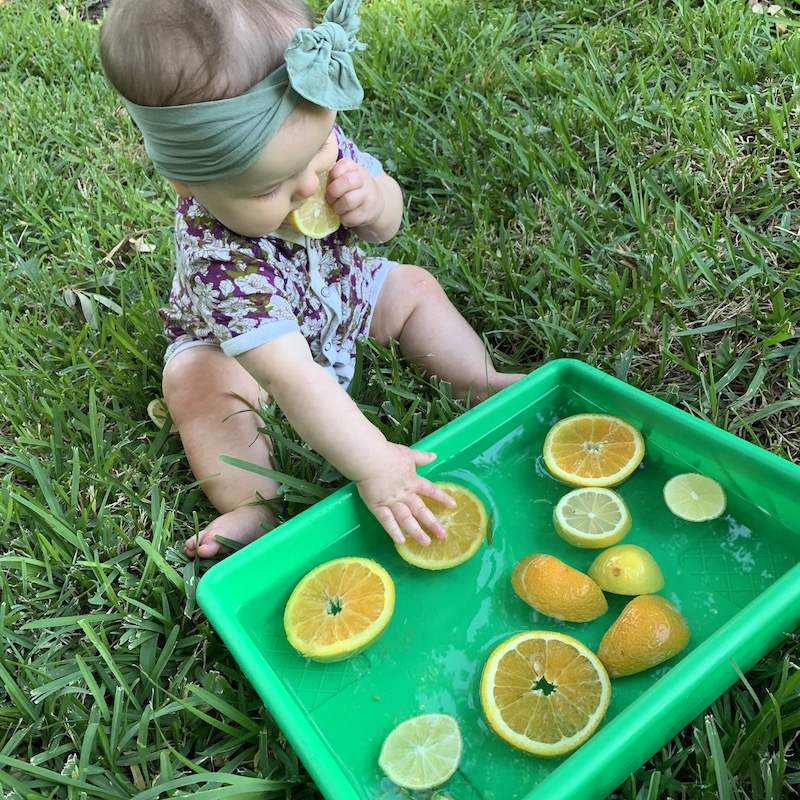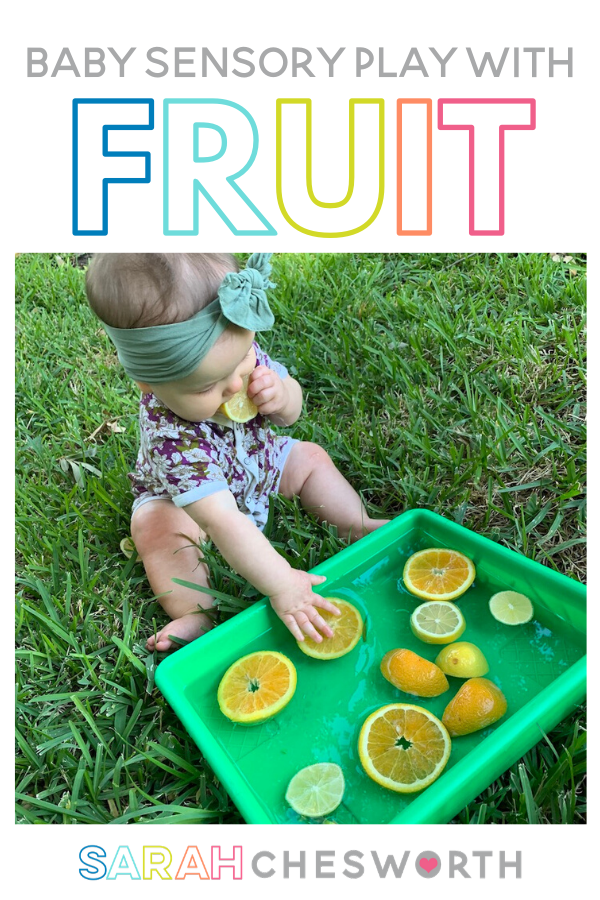Are you looking for the baby sensory play activities? This post is dedicated to sensory activities just for babies! Read on for some fun ideas for incorporating sensory play into the day for children under 12 months old.
if you are looking for activities for older toddlers, check out this post: 50 Simple Activities for One Year Olds.
Sensory Play for Babies
Sensory play is an essential part of a baby’s development and helps them to learn, grow and explore their environment. Not only does it provide fun and entertainment for babies, but sensory activities also help promote healthy physical, emotional and mental development.
Benefits of Sensory Play for Babies
- Encourages play, curiosity, and exploration of the world
- Fosters independence and pretend play
- Strengthens motor skills
- Opportunities for critical thinking and problem-solving
- Supports language development
- Promotes self-control
As always, please supervise any activity with your baby closely and use your best judgment on what is developmentally appropriate for your little one. Anything can turn into a choking hazard, especially seeds. Also, reactions can happen with different foods so please speak with your pediatrician before trying anything new with your child.
Exploring Textured Materials
Give your little one the chance to explore different textures, and talk about what you notice. Start off with something with a smooth texture such as wooden blocks, or move on to textured materials like sandpaper, fur, feathers, bubbles, and crinkly foil. Encourage your child to touch the materials and observe how they react – discuss the texture of each material including rough/smooth, dry/wet, and sticky/soft.
Read Texture Books
Textures books are a great and easy way to engage babies in sensory play activities. Use materials such as felt, bubble wrap, fabric scraps, sandpaper or foam to create pages that can be flipped through like a traditional book. Add fun stories with the textures to stimulate infants’ vision, touch and sound for a truly engaging experience.
Related Post: Best Board Books for Babies
Water Play
Everyone loves water play – it’s great fun for babies and a great sensory experience. Fill a large shallow container or sink with water and let baby explore with his hands and feet – this is a great way for them to practice their fine motor skills too!
You can experiment using temperature by adding warm or cold water, or adding items such as ice, floating plastic toys, sponges, and balls for different tactile sensations. Never leave your baby unsupervised with water.
Baby Sensory Play with Fruit
Fruit can be a great item for baby sensory play. For this activity, just cut up lemons, limes, and oranges into slice and wedge shapes. Little ones will enjoy pulling each one out and feeling the fruits and tasting a few too!
I would recommend this activity for babies 6-12 months of age since that is usually when you begin introducing different foods and flavors.

As always, please supervise any activity with your baby closely and use your best judgment on what is developmentally appropriate for your little one. Anything can turn into a choking hazard, especially seeds. Also, reactions can happen with different foods so please speak with your pediatrician before trying anything new with your child.

Touch Boxes and Bags
Touch is one of the most important senses and it develops early in a baby’s life. You can encourage and stimulate your infant’s sense of touch by creating touch boxes or bags that can provide an exciting tactile experience.
All you need to do is fill a box or bag with different fabrics, toys, containers and objects that have different textures for your baby to explore. For extra fun, use items with temperature variation by including items like smooth stones, metal spoons and chilled kiwis!
Messy Play
Messy play encourages your baby to explore a range of textures and develop their fine motor skills. Use bright colors, shapes and patterns to help stimulate your child’s senses. For the messiest playtime, try painting with water or another taste safe material like jello mix or pudding! The sensory experience of painting with water or pudding will improve your baby’s haptic senses while they’re having fun in the process!
Music and Dancing
Music and dance are a great way to engage babies in sensory play activities because it involves sound, movement and rhythm. Choose favorite nursery rhymes with actions and wiggle with your little one to the beat. Alternatively, you can use interesting instruments such as shakers, drums or bells that create beautiful sounds and will encourage your baby to explore the tactile experience of making music.
Bubble Play
Bubble play is a great sensory activity for babies! Simply blow bubbles and watch your child’s amazement as they watch them move. A bubble machine can also be fun. You can also pop the bubbles with their hands or feet to teach cause and effect. Babies will be mesmerized as they learn about sight, sound, and touch!
Sensory Bin with Hidden Objects
Set up a sensory bin with hidden objects such as small toys, and other items such as spoons, cups and bowls. Give your baby the opportunity to explore their senses by digging through the bin to find the hidden objects. Cheerios can be crushed down into a fine sand texture for this activity! Let your baby’s imagination take over as they mix and match the different materials!
If you are just getting started with sensory play, be sure to check out this post called, Getting Started with Sensory Bins.
Edible Finger Paint
For a fun, safe sensory play activity you can make at home, try edible finger paint! Mix equal parts cornstarch and sugar in any flavor of drink mix—try peach or strawberry for a sweet taste.
Then, stir in enough water to make the mixture spreadable. Tip it out onto a tabletop or tray, add some plastic figures like dinosaurs or animals, and let your baby explore by smearing the mixture with their fingers!
FAQ about Sensory Play for Babies:
Why is sensory play important for babies?
Sensory play is important for babies because it helps them explore and learn about the world around them. It helps to stimulate their senses, while also improving fine and gross motor skills. Sensory activities can aid in language development, problem-solving, concentration and imagination, as well as build relationships between the child and parent or caregiver.
When should you start sensory play with babies?
The best time to start sensory activities for babies is when they are about 6 months old. During this stage, their senses are still rapidly developing, and providing them with sensory play can help strengthen the various neural connections in the brain. Babies are actually learning about the world with their senses since birth.
What toys are best for babies?
If you are looking for toys specifically aligned with your child’s development I recommend checking out LOVEVERY. You can see my full review in this post, LOVEVERY Play Kit Review.
Sensory play for babies is an important part of their development. I hope this post gave you some ideas for getting started with your child!
